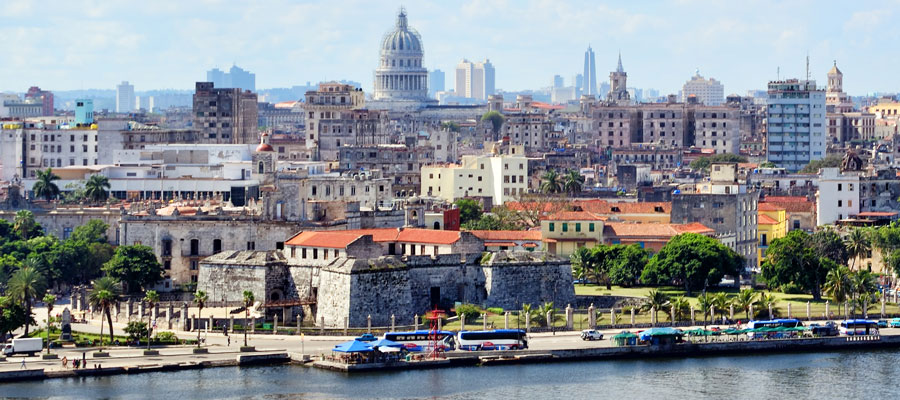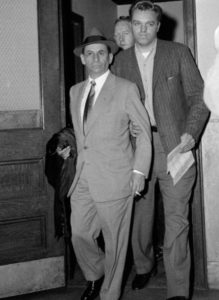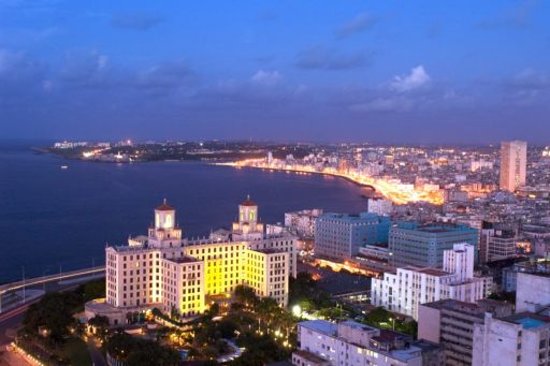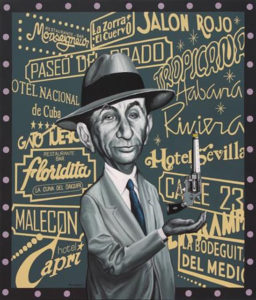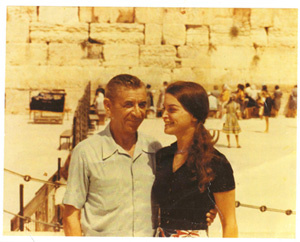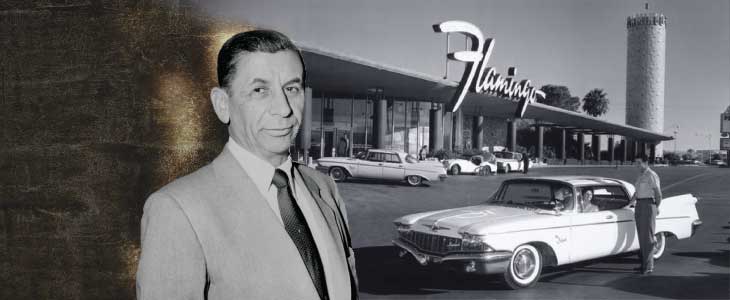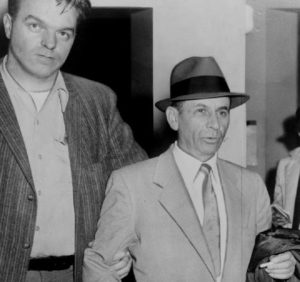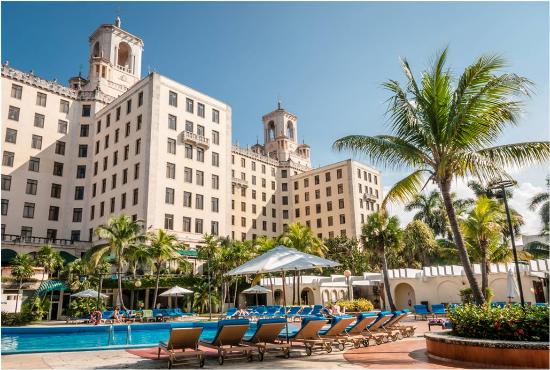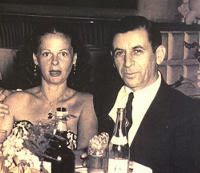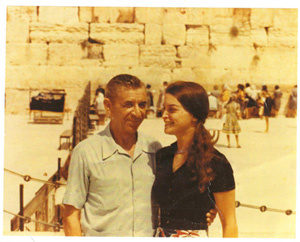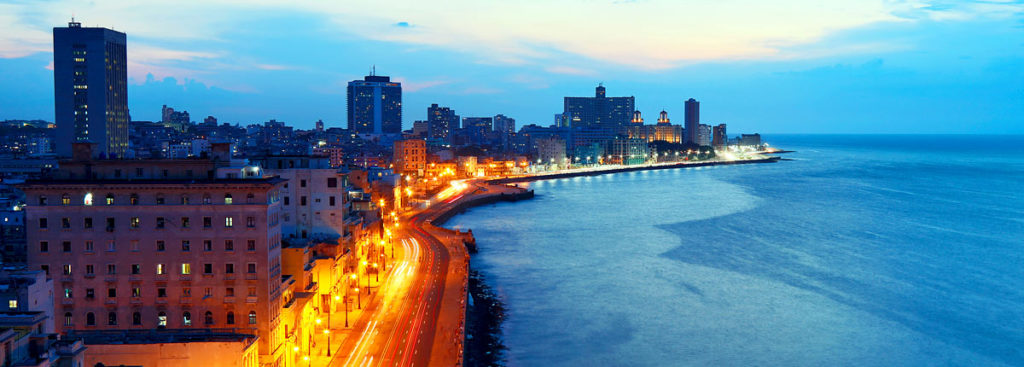 HAVANA’S LIFE OF MEYER LANSKY, “LUCKY LUCIANO ACCOUNTANT”.
HAVANA’S LIFE OF MEYER LANSKY, “LUCKY LUCIANO ACCOUNTANT”.
Meyer Lansky was born Meier Suchowlański on July 4, 1902 in Grodno, (now Belarus) to a Polish-Jewish family. He was known as the “Mob’s Accountant”, was a major organized crime figure who, along with his associate Charles “Lucky” Luciano, was instrumental in the development of the National Crime Syndicate in the United States with a later presence in Cuba.
In 1946, after World War II, his friend Lucky Luciano was paroled from prison on the condition that he permanently return to Sicily. However, Luciano secretly moved to Cuba, where he worked to resume control over Mafia operations. Luciano also ran a number of casinos in Cuba with the sanction of Cuba’s authoritarian dictator, Fulgencio Batista, though the US government succeeded in pressuring the Batista regime to deport Luciano.
BATISTA AND LANSKY FRIENDSHIP, BUSINESSES.
Batista retook control of the government in a military coup in March 1952, he quickly put gambling back on track. Batista and Lansky formed a renowned friendship and business relationship that lasted for a decade. Batista would open Havana to large scale gambling, and his government would match, dollar for dollar, any hotel investment over $1 million, which would include a casino license. Lansky would place himself at the center of Cuba’s gambling operations. By 1955, Batista had changed the gambling laws once again, granting a gaming license to anyone who invested $1 million in a hotel or $200,000 in a new nightclub.
The conditions for a secure illegal trade between both territories were agreed between the government of Batista and Meyer Lansky, treasurer of the Mafia and absolute confidence at that time of the “capo di tutti capi” from New York, Charles” Lucky “Luciano, Lansky acted as coordinator of this group. Resorts (hotels), real estate, banks and gambling casinos, were his first objectives. For this it became necessary to have a headquarters in Cuba for organized crime, given the proximity of Cuba to the US territory, tolerance, bribery and the protection provided by the island’s authorities to their business plans.
Unlike the procedure for acquiring gaming licenses in Vegas, this provision exempted venture capitalists from background checks. As long as they made the required investment, they were provided with public matching funds for construction, a 10-year tax exemption and duty-free importation of equipment and furnishings. The government would get $250,000 for the license, plus a percentage of the profits from each casino. Cuba’s 10,000 slot machines, even the ones that dispensed small prizes for children at country fairs, were to be the province of Batista’s brother-in-law, Roberto Fernandez y Miranda. A Cuban army general and government sports director, Fernandez was also given the parking meters in Havana as a little something extra. Import duties were waived on materials for hotel construction and Cuban contractors with the right “in” made windfalls by importing much more than was needed and selling the surplus to others for hefty profits. It was rumored that besides the $250,000 to get a license, sometimes more was required under the table. Periodic payoffs were requested and received by corrupt politicians.
LANSKY LIFE IN HAVANA.
To Meyer Lansky, the FBI considered him a financial brain and builder of vast gaming empires in Las Vegas, Cuba and the Bahamas. Scholars and historians say that from the thirties until the triumph of the revolution in January 1959, there was no political or big business event, in which the hands of Lansky were not behind. Meyer Lansky installed his headquarters in Havana, in suite # 829 of the historic “Hotel Nacional de Cuba”, from where he ruled with an iron hand. They say that in the Salón Aguiar of that hotel, extremely luxurious, they served exquisite international dishes, but not spaghetti.
Lansky frequented restaurants of haute cuisine and marine specialties, including one located next to the Havana coast called “Las Culebrinas”, where he tasted the shrimp, more to his liking only boiled and with lemon. It is curious that this center no longer exists but in Miami I met one of the same name, which like many cases must be the successor of the original in the new Havana.
He also liked “La Terraza de Cojímar”, which was also preferred by Hemingway, but they never met. Or in “El Castillo de Farnés”, specialized in seafood and Spanish food, where he usually ate a “Paella special”. I have already made reference in a special article dedicated to this restaurant, and my first encounters with the Galician octopus that they made in that place, I do not lie if I say that I have never eaten it again. Those were the preferred places to talk about business or share with the people of your highest confidence. Nor was I oblivious to a restaurant that I mentioned a lot and that was one of my favorite “El Monseñor”, of refined French style and exquisite preparations of seafood and the specialty: filet Mignon, and also located right in front of the Hotel Nacional. And later we will see the Jewish quarter and Boris’s restaurant, where he frequented.
Lansky set about reforming the Montmartre Club, which soon became the “in” place in Havana. He also long expressed an interest in putting a casino in the elegant Hotel Nacional, which overlooked El Morro, the ancient fortress guarding Havana harbor. Lansky planned to take a wing of the 10-story hotel and create luxury suites for high-stakes players. Batista endorsed Lansky’s idea and the elegant hotel opened for business in 1955 with a show by Eartha Kitt. The casino was an immediate success.
Once all the new hotels, nightclubs and casinos had been built, Batista wasted no time collecting his share of the profits. Nightly, the “bagman” for his wife collected ten percent of the profits at Trafficante’s interests; the Sans Souci cabaret, and the casinos in the Sevilla-Biltmore, Commodoro, Deauville and Capri hotels. His take from the Lansky casinos, his prized Habana Riviera, the Nacional, the Montmartre Club and others, was said to be 30 percent. What exactly Batista and his cronies actually received in total in the way of bribes, payoffs and profiteering has never been certified. The slot machines alone contributed approximately $1 million to the regime’s bank account.
LANSKY LOVE LIFE IN HAVANA.
And of Meyer’s liking for beings with long hair, we must mention the story of Rachel, an actress of pornographic films that were projected in the old Shanghai theater in Havana, which was her lover. Then Carmen, the Cuban lover of Meyer Lansky, appeared. Someone who knew her told an American journalist that she was the most beautiful woman he had ever seen. Lansky shared a high floor with her on the Paseo del Prado, where Carmen’s mother also lived. Lansky and Carmen met at El Encanto, the luxurious department store in Galiano and San Rafael. That relationship was something unusual in the mafia leader, who did not allow himself those freedoms. Lansky kept Carmen in the darkest ostracism and darkness, not only because he was terrified that his wife Teddy might learn about this clandestine love, but because he always criticized those secret love affairs in his associates, which he described as a weakness.
Lansky left Cuba in January 1959, after the triumph of Fidel Castro and returned in March of the same year to get Carmen out of the island, but he did not find her. Nobody else heard from her again.
The Castro Revolution changed the climate for mob investment in Cuba. On that New Year’s Eve of 1958, while Batista was preparing to flee to the Dominican Republic and then on to Spain (where he died in exile in 1973), Lansky was celebrating the $3 million he made in the first year of operations at his 440-room, $18 million palace, the Habana Riviera. Many of the casinos, including several of Lansky’s, were looted and destroyed that night.
On January 8, 1959, Castro marched into Havana and took over, setting up shop in the Hilton. Lansky had fled the day before for the Bahamas and other Caribbean destinations. The new Cuban president, Manuel Urrutia Lleó, took steps to close the casinos.
Lansky’s last years were spent quietly at his home in Miami Beach. He died of lung cancer on January 15, 1983, aged 80, leaving behind a widow and three children. On paper, Lansky was worth almost nothing. At the time, the FBI believed he left behind over $300 million in hidden bank accounts, but they never found any money.
 VIDA EN LA HABANA DE MEYER LANSKY, “LUCKY LUCIANO ACCOUNTANT”.
VIDA EN LA HABANA DE MEYER LANSKY, “LUCKY LUCIANO ACCOUNTANT”.
Meyer Lansky nació Meier Suchowlański el 4 de julio de 1902 en Grodno, (ahora Bielorrusia) en una familia polaco-judía. Era conocido como el “Contador de la mafia”, una figura importante del crimen organizado que, junto con su socio Charles “Lucky” Luciano, fue instrumental en el desarrollo del Sindicato Nacional del Crimen en los Estados Unidos con una presencia posterior en Cuba.
La primera vez que Lansky fue a La Habana asistió a una reunión en 1946. Después de la Segunda Guerra Mundial, su amigo Lucky Luciano fue puesto en libertad condicional con la condición de que regrese permanentemente a Sicilia. Sin embargo, Luciano se mudó secretamente a Cuba, donde trabajó para retomar el control de las operaciones de la mafia. Luciano también dirigió varios casinos en Cuba con la sanción del dictador autoritario de Cuba, Fulgencio Batista, aunque el gobierno de Estados Unidos logró presionar al régimen de Batista para que deportara a Luciano.
BATISTA Y LANSKY AMISTAD, NEGOCIOS.
Batista retomó el control del gobierno en un golpe militar en marzo de 1952, y rápidamente volvió a encarrilar las apuestas. Batista y Lansky formaron una relación de amistad y negocios de renombre que duró una década. En 1955, Batista había cambiado las leyes de juego una vez más, otorgando una licencia de juego a cualquiera que invirtiera $ 1 millón en un hotel o $ 200,000 en un nuevo club nocturno. A diferencia del procedimiento para adquirir licencias de juego en Las Vegas, esta disposición eximió a los capitalistas de riesgo de las verificaciones de antecedentes. Siempre que realizaran la inversión requerida, se les proporcionaron fondos de contrapartida públicos para la construcción, una exención de impuestos por 10 años e importación libre de impuestos de equipos y mobiliario. El gobierno obtendría $ 250,000 por la licencia, más un porcentaje de las ganancias de cada casino. Las 10.000 máquinas tragamonedas de Cuba, incluso las que distribuían pequeños premios para niños en las ferias nacionales, serían competencia del cuñado de Batista, Roberto Fernández y Miranda. Un general del ejército cubano y director deportivo del gobierno,a Fernández también se le dieron los parquímetros en La Habana como algo extra. Los aranceles de importación fueron eximidos de los materiales para la construcción de hoteles y los contratistas cubanos con el derecho “en” hicieron ganancias inesperadas al importar mucho más de lo necesario y vender el excedente a otros por grandes ganancias. Se rumoreó que además de los $250,000 para obtener una licencia, a veces se requería más debajo de la mesa. Las ganancias periódicas fueron solicitadas y recibidas por políticos corruptos.
Batista ofreció a Lansky el control de los hipódromos y casinos de La Habana. Batista abrió La Habana a los juegos de azar a gran escala, y su gobierno igualaría, dólar por dólar, cualquier inversión hotelera de más de $ 1 millón, que incluiría una licencia de casino. Lansky se colocaría en el centro de las operaciones de juego de Cuba.
LANSKY Y SU VIDA EN LA HABANA.
Para Meyer Lansky, el FBI lo consideró un cerebro financiero y constructor de vastos imperios de juego en Las Vegas, Cuba y las Bahamas. Los eruditos e historiadores dicen que desde los años treinta hasta el triunfo de la revolución en enero de 1959, no hubo ningún evento político o de grandes negocios, en el que las manos de Lansky no estuvieran atrás. Meyer Lansky instaló su cuartel general en La Habana, en la suite # 829 del histórico “Hotel Nacional de Cuba”, desde donde gobernó con mano de hierro. Dicen que en el Salón Aguiar de ese hotel, extremadamente lujoso, servían exquisitos platos internacionales, pero no espaguetis.
Lansky frecuentaba restaurantes de alta cocina y especialidades marineras, incluyendo uno ubicado al lado de la costa de La Habana llamado “Las Culebrinas”, donde probó el camarón, más a su gusto solo hervido y con limón. Es curioso que este centro ya no exista pero en Miami conocí uno del mismo nombre, que como muchos casos debe ser el sucesor del original en la nueva Habana.
También le gustó “La Terraza de Cojímar”, que también fue preferido por Hemingway, pero nunca se conocieron. O en “El Castillo de Farnés”, especializado en mariscos y comida española, donde solía comer una “paella especial”. Ya hice referencia en un artículo especial dedicado a este restaurante, y mis primeros encuentros con el pulpo gallego que hicieron en ese lugar, no miento si digo que nunca más volví a comer. Esos fueron los lugares preferidos para hablar sobre negocios o compartir con las personas de su más alta confianza. Tampoco olvidé un restaurante que mencioné mucho y que era uno de mis favoritos “El Monseñor”, de refinado estilo francés y exquisitas preparaciones de mariscos y la especialidad: filet Mignon, y también ubicado justo en frente del Hotel Nacional . Y luego veremos el barrio judío y el restaurante de Boris, donde frecuentaba.
Lansky se dispuso a reformar el Club Montmartre, que pronto se convirtió en el lugar “in” en La Habana. También desde hace tiempo expresó interés en poner un casino en el elegante Hotel Nacional, que daba a El Morro, la antigua fortaleza que custodiaba el puerto de La Habana. Lansky planeó tomar un ala del hotel de 10 pisos y crear suites de lujo para jugadores de alto riesgo. Batista apoyó la idea de Lansky y el elegante hotel abrió sus puertas en 1955 con un espectáculo de Eartha Kitt. El casino fue un éxito inmediato.
Una vez que todos los nuevos hoteles, clubes nocturnos y casinos se habían construido, Batista no perdió tiempo en recoger su parte de las ganancias. Cada noche, el “bagman” de su esposa obtenía el diez por ciento de los beneficios a los intereses de Trafficante; el cabaret Sans Souci, y los casinos en los hoteles Sevilla-Biltmore, Commodoro, Deauville y Capri. Se dice que su participación en los casinos Lansky, su preciado Habana Riviera, el Nacional, el Club Montmartre y otros fue del 30 por ciento. Lo que Batista y sus compinches realmente recibieron en total en forma de sobornos, sobornos y lucro nunca ha sido certificado. Solo las máquinas tragamonedas contribuyeron aproximadamente $ 1 millón a la cuenta bancaria del régimen.
VIDA AMOROSA DE LANSKY EN LA HABANA.
Y del gusto de Meyer por mujeres con cabello largo, debemos mencionar la historia de Rachel, una actriz de películas pornográficas que se proyectaron en el antiguo teatro de Shanghai en La Habana y que fue su amante. Después apareció Carmen, la otra amante cubana de Meyer Lansky. Alguien que la conocía le dijo a una periodista estadounidense que era la mujer más bella que había visto en su vida. Lansky compartió un piso alto con ella en el Paseo del Prado, donde también vivía la madre de Carmen. Lansky y Carmen se conocieron en El Encanto, la lujosa tienda departamental en Galiano y San Rafael. Esa relación era algo inusual en el líder de la mafia, que no se permitía esas libertades. Lansky mantuvo a Carmen en el más oscuro ostracismo y oscuridad, no solo porque estaba aterrorizado de que su esposa Teddy pudiera aprender acerca de este amor clandestino, sino porque siempre criticaba los amores secretos de sus compañeros, lo que describía como una debilidad.
Lansky dejó Cuba en enero de 1959, después del triunfo de Fidel Castro y regresó en marzo del mismo año para sacar a Carmen de la isla, pero no la encontró. Nadie más escuchó de ella otra vez.
La Revolución de Castro cambió el clima para la inversión de la mafia en Cuba. En la víspera de Año Nuevo de 1958, mientras Batista se preparaba para huir a la República Dominicana y luego a España (donde murió en el exilio en 1973), Lansky celebraba los $ 3 millones que ganó en el primer año de operaciones en su 440 -habitación, palacio de $ 18 millones, Habana Riviera. Muchos de los casinos, incluidos varios de Lansky, fueron saqueados y destruidos esa noche.
El 8 de enero de 1959, Castro marchó a La Habana y se hizo cargo, estableciendo una tienda en el Hilton. Lansky había huido el día anterior para las Bahamas y otros destinos del Caribe. El nuevo presidente cubano, Manuel Urrutia Lleó, tomó medidas para cerrar los casinos.
Los últimos años de Lansky se consumieron en paz en su casa de Miami Beach. Murió de cáncer de pulmón el 15 de enero de 1983, a la edad de 80 años, dejando atrás una viuda y tres hijos. En el papel, Lansky no valía casi nada. En ese momento, el FBI creía que había dejado más de $ 300 millones en cuentas bancarias ocultas, pero nunca encontraron dinero.
Agencies/Wiki/Memorias Cubanas/Internet Photos/ Arnoldo Varona/ TheCubanHistory.com
THE CUBAN HISTORY, HOLLYWOOD.



